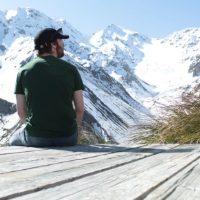Studying Abroad in New Zealand: Wildlife Conservation
Stephen is a Marine Biology student in the School of Biological Sciences at Queen’s and had the chance to study in New Zealand for a semester. Today he’s sharing his experiences on the other side of the world.
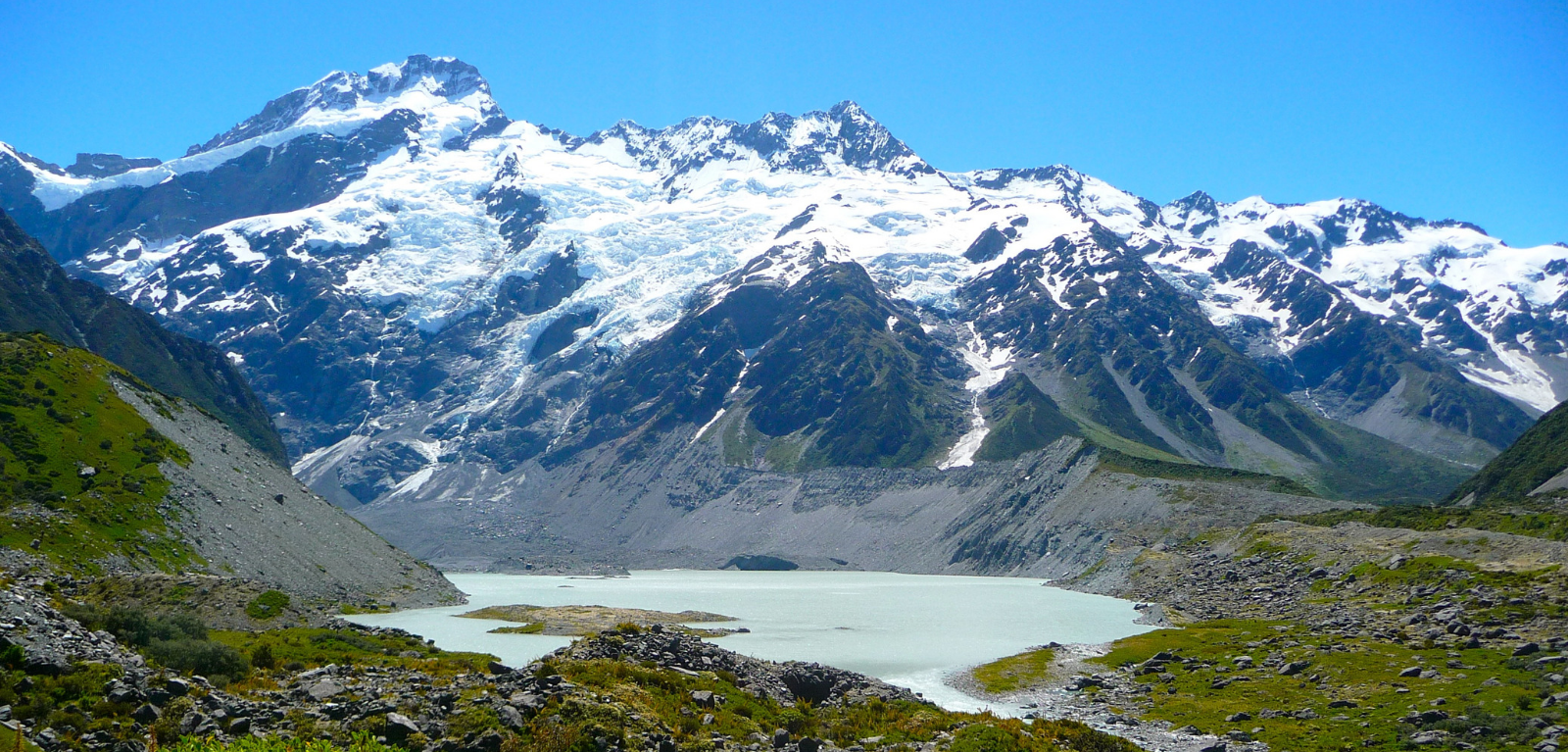
My journey to New Zealand began on my first day of lectures at QUB! Thanks to a sentence on a PowerPoint slide that nobody else seemed to notice. Ironically, after choosing to go to Queen’s University in part because it was close to home, I was one of just a few people who chased up Dr Paul Mensink on his ‘potential opportunity to study in New Zealand for a semester’.
Seizing the Opportunity
The opportunity turned out to be at Victoria University of Wellington (soon to be the University of Wellington due to an incoming name change). A year’s worth of planning then began as the two universities made the necessary agreements and set up the partnership which would allow me to be one of the first people to benefit from this partnership. The group of us who played the “academic guinea pigs” for the partnership have seen a hopefully a long-standing arrangement develop between QUB and VUW.
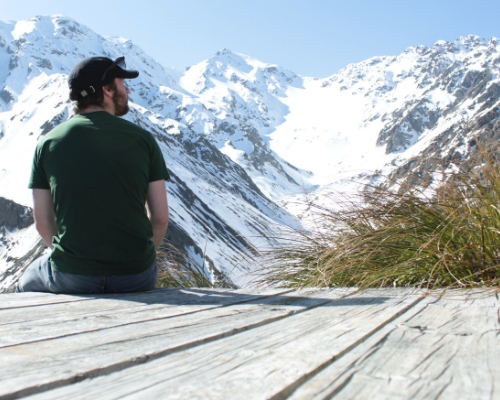
Travelling to New Zealand marked the first time I’d ever left Europe – the first time I’d ever gone outside Ireland on my own. I’d be lying if I said I wasn’t nervous! After 24 hours worth of airtime, I landed in Auckland and checked into my accommodation. After I spent a couple of days recovering from the jet lag I decided to do some sightseeing in the city and started making my plans to get from Auckland to Wellington.
I opted to take the train south, rather than flying. The Northern Explorer Rail journey is a perfect introduction to the natural beauty New Zealand has to offer. I was treated to 12 hours of rolling hills, snow-capped peaks and stunning coastlines all from the comfort of a train carriage.
Students of the World
I arrived at my university accommodation in Wellington a day early, met my RA and went to bed as I was exhausted from a day of travel and still feeling a bit jet-lagged. The next morning I went down to the city to grab a few essentials and met two of my housemates for the semester, Jade and Christy. Jade is from York in the UK and Christy is from Texas. The three of us all study some variation on marine science and biology, although only Jade and I shared classes, so we went to enrolment/registration and induction together.
The next day we met another housemate, Emily from Pennsylvania, USA. In the 4 months we lived and went to university together we took a lot of day trips and went on road trips and became friends for life. Having good people around me made it much easier to adjust to my new temporary home.
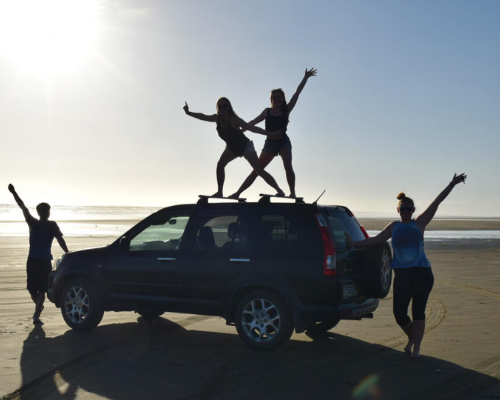
Student Life in New Zealand
The courses I took at VUW were Marine Ecology, Community and Population Ecology and Animal Biology. All of these modules had quite a lot of overlap with content I had studied at QUB, but it was good to get different perspectives on it and learn about different case studies to see how different concepts can be brought to life. There were also plenty of chances to learn and work independently and in groups, as we gave both individual and group presentations on topics we picked and researched ourselves.
The courses also set me up with some background knowledge of endangered species in New Zealand and some efforts which have been made to help them. This helped to ensure I wasn’t completely out of my depth when I started working at the department of conservation.
Conservation on a national scale
New Zealand’s approach to conservation is unlike anywhere I’ve ever heard of, and certainly came about as a result of the unique wildlife and ecology of the country. Because it has been isolated from other land masses for so long, New Zealand has hundreds of endemic species. However, also as a result of its isolation, these species are almost all threatened by invasive organisms, whether they are competitors or predators.
Since the species aren’t found anywhere else, and they have both cultural (many of New Zealand’s species are sacred to the indigenous Māori people) and economic (ecotourism and other avenues) value, New Zealand’s government created a state-funded conservation organisation in 1987, which employs over 2000 staff in a broad range of working environments.
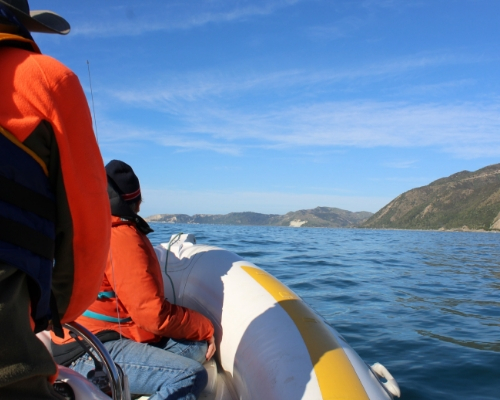
Tracking Bird Populations
For the first part of my professional studies year, I was employed in the Department of Conservation’s (DOC) national office in Wellington as an intern. I provided technical and administrative support to the Marine Species and Threats team of the aquatic unit. This meant a lot of spreadsheets and database entry, but I also got to do some fieldwork and two long-term policy documents which will hopefully be well on their way to being implemented by the time I leave DOC.
The first fieldwork project that I was involved in was supporting a community-led group in Kaikoura – the Hutton’s Shearwater Charitable Trust. We spent two nights in the hills of Kaikoura spray-painting birds with red paint for a mark-resample estimate of the population size, to assess the damage caused by the 2016 Kaikoura earthquake which brought landslides down on several colonies of the birds.
After marking some 2000 birds over two nights, we then spent three days on boats, counting birds which were marked and unmarked. Using the ratio of marked-unmarked birds and the number of birds we know we marked, an estimate of the population size can be calculated. For this project we worked with Dr Paul Scofield, Senior Curator of Natural History at Canterbury Museum; Sharyn Goldstien from the University of Canterbury and Nicky McArthur, the head of the Hutton’s Shearwater Charitable Trust and owner of Puhi Peaks Station in Kaikoura.
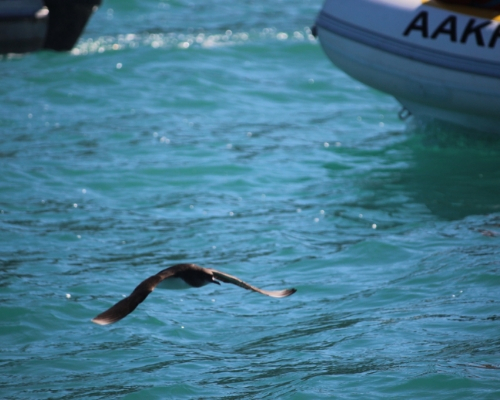
Keeping Eggs Safe from Predators
The second fieldwork project was a DOC managed project on Kapiti Island off the west coast of the North Island. We were setting up camera traps and modifying fences on special enclosures built for Sooty Shearwaters (Tītī), to protect their eggs and burrows from Weka. Tītī make their nests by digging burrows in the soft ground along coasts.
Weka are flightless birds which prey on the eggs laid by the tītī, as they are easily accessible underground rather than high in trees. In order for the tītī to be able to get out of the pens, there are one-way tunnels and ramps built into the fences.
Since the birds are at sea during the day, camera traps need to be used to see if the birds are using the tunnels and ramps at night, without disturbing and harassing them with torches and artificial lights. There was a small amount of footage gathered a few months previously which showed that some of the birds couldn’t work out that they needed to go up the ramps to get out of the pens, so we modified the fence line to funnel the birds up the ramps and out of the pens.
Developing New Interests and Skills
For my policy documents, I wrote a Standard Operating Procedure (SOP) for tagging juvenile fur seals and sea lions and updated a Code of Practice (COP) for handling bycatch of protected species on purse seine (a specific method of fishing) fishing boats. Both documents required me to read through a lot of animal rights and wildlife protection legislation, which was surprisingly interesting as I usually joke about how boring law is with friends who study it.
I also spent a lot of time communicating with experts in the tagging processes and the animals concerned by both documents in order to devise the best practices and methods which could be written into the documents and become the national standard for how they are carried out.
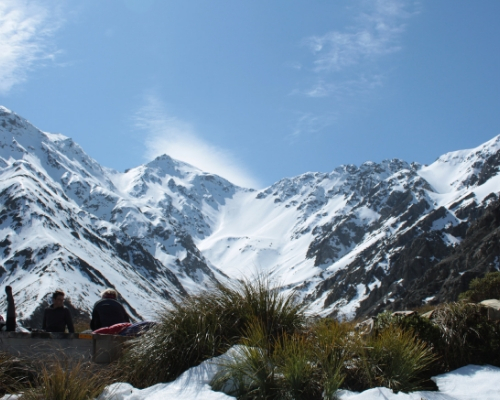
The Most Valuable Lesson
One of the most valuable things I’ve learned here is an appreciation and understanding of what real conservation looks like. There is more to protecting wildlife than going out and untangling dolphins, resuscitating turtles and hand-rearing hedgehogs.
Those aspects are important in their own way, but for the sustainable and nationally feasible conservation of species, there needs to be a legally obligating standard for how those organisms are treated. Prevention is better than the cure, and conservation is no different. Reactive conservation isn’t good enough – we need to protect the wildlife from harm, not just settle for fixing the damage after the fact.
A Home Away from Home
I’ve also come to think of New Zealand as a second home after spending 9 months living here. Getting settled in is easy since the people are so friendly and open to meet new people. The atmosphere in the city of Wellington is unique and feels much more relaxed than other cities I’ve visited and lived in, and the sights the country has to offer are second to none! I count myself incredibly lucky to have this opportunity so early on in my career and have no doubt that it wouldn’t have happened if not for the fact that I decided to study at QUB.
Find out more about Marine Biology and other courses available in School of Biological Sciences. Or explore the wide range of study abroad options at Queen’s.
